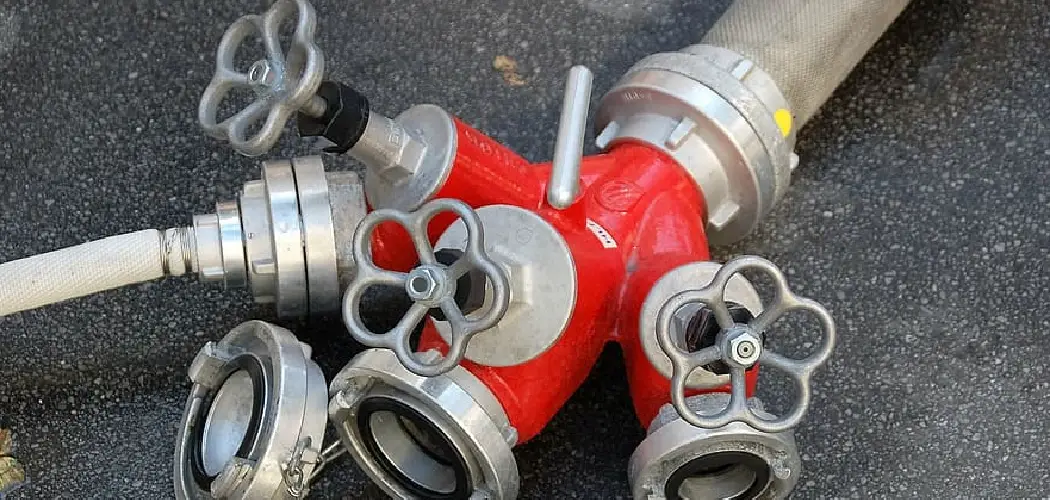Sizing a fire pump is essential in designing an efficient and effective fire protection system. A fire pump is a critical component of any sprinkler or standpipe system, which provides the necessary water pressure to fight fires. Proper sizing ensures that the pump can meet the flow and pressure requirements of the fire protection system.
In this guide on how to size a fire pump, we will discuss the factors to consider when sizing a fire pump and the steps involved in the process.
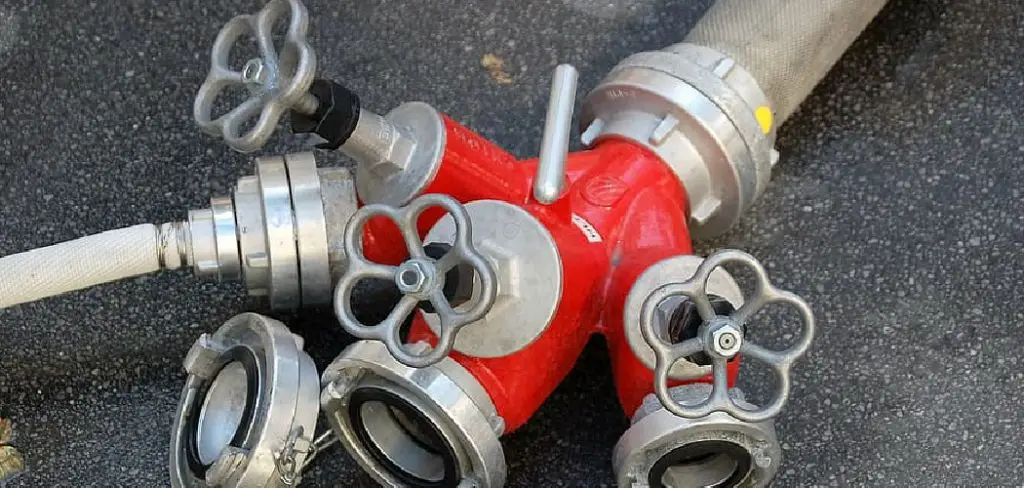
Necessary Items
Before starting the sizing process, there are a few necessary items you should have on hand:
- Building Plans: Fire pump sizing requires detailed building plans or blueprints that include information on the size and layout of the structure.
- Water Supply Information: You need to know the available water supply in terms of flow and pressure. This can be obtained from local authorities or through water flow tests.
- Fire Protection System Design: The type of fire protection system in place, whether it’s a sprinkler or standpipe system, will influence the sizing of the fire pump. Make sure to have the design specifications and requirements on hand.
12 Steps on How to Size a Fire Pump
Step 1: Determine the Required Flow Rate
The first step in sizing a fire pump is to determine the required flow rate for your specific system. This calculation is based on several factors, such as the size and layout of the building, occupancy type, and fire risk. Once you have this information, you can move on to the next steps.
Step 2: Calculate Required Pressure
After determining the required flow rate, the next step is to calculate the required pressure for your system. This calculation takes into account factors such as elevation changes, friction losses in pipes, and the water supply’s available pressure.
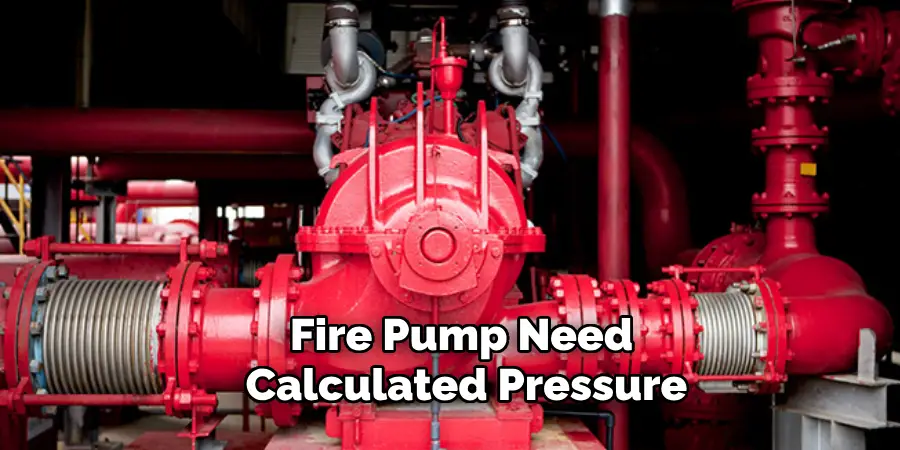
Step 3: Determine Total Dynamic Head
Total dynamic head (TDH) is the total amount of pressure required to move water through the fire protection system. It is calculated by adding together the elevation head, friction losses, and any additional pressure requirements.
Step 4: Select Pump Type
Based on your flow rate and TDH calculations, you can now select the type of pump that best suits your needs. There are three main types of pumps used in fire protection systems: centrifugal, turbine, and positive displacement.
Step 5: Factor in Safety Margins
Safety margins should be factored into your calculations to ensure that the pump can meet the system’s requirements under various conditions. This includes any potential changes or restrictions in water supply, elevation changes, and system degradation over time.
Step 6: Determine Pump Capacity
Once you have selected the pump type and factored in safety margins, you can determine the pump’s required capacity. This calculation takes into account the pump’s efficiency and any additional factors that may affect its performance.
Step 7: Select Motor Size
The motor size is determined based on the pump’s required capacity and the power supply available. It is essential to select a motor that can handle the pump’s power requirements and have room for future growth.
Step 8: Factor in Standby Requirements
In some cases, it may be necessary to have a backup or standby pump in case of failure. This should be factored into the sizing process to ensure the fire protection system’s reliability. It is recommended that at least one backup pump be installed for critical facilities.
Step 9: Check National and Local Codes
Before finalizing your fire pump sizing, it is essential to check the national and local codes for any specific requirements or regulations that may affect your system’s design. This includes factors such as minimum flow rates, maximum pressure limits, and pump room layout specifications.
Step 10: Procure Equipment and Materials
Once the fire pump has been sized and all necessary calculations have been made, it is time to procure the equipment and materials needed for installation. This includes the fire pump itself, motor, piping, valves, and any other components necessary for the system.

Step 11: Perform Regular Maintenance
Proper maintenance is critical for ensuring the fire pump’s continued effectiveness and longevity. It is recommended that regular inspections and testing of the fire pump be scheduled to identify any potential issues and ensure it is functioning correctly.
Step 12: Train Personnel
Proper training on how to operate and maintain the fire pump should be provided to all relevant personnel, including building staff and firefighters. This ensures that the fire pump can be used effectively in case of a fire emergency.
Sizing a fire pump is a crucial step in designing an efficient and reliable fire protection system. By following these 12 steps, you can ensure that your fire pump meets all necessary requirements and provides adequate water pressure to fight fires effectively. Remember to regularly inspect and maintain the fire pump and provide proper training to personnel to ensure its continued effectiveness.
9 Safety Measures to Follow When Sizing a Fire Pump
Sizing a fire pump is not only about ensuring its efficiency and effectiveness but also about following safety measures to protect the building’s occupants and property. Here are nine safety measures you should keep in mind when sizing a fire pump:
1) Adhere to Codes and Standards
Make sure to follow all national and local codes and standards when sizing a fire pump. These regulations ensure that the system is designed and installed correctly, reducing the risk of failure in case of a fire emergency. Failure to comply with codes and standards can lead to fines, legal issues, and potential danger for the building’s occupants.
2) Consider Fire Hazards
When sizing a fire pump, it is crucial to consider any potential fire hazards in the building. This includes flammable materials, electrical equipment, and other sources of ignition that may increase the risk of a fire. Properly accounting for these hazards in the sizing process can help ensure that the fire pump can effectively combat any potential fires.
3) Verify Water Supply Adequacy
Before finalizing the size of a fire pump, it is essential to verify that the water supply is adequate for its operation. This includes checking for any restrictions or limitations in water supply, such as small pipes or low water pressure, that may affect the pump’s performance.
4) Account for Future Growth
When selecting a fire pump and motor size, it is crucial to account for future growth in the building. This includes any potential expansions or renovations that may increase the building’s demand for fire protection. Selecting a larger pump and motor can help accommodate future growth without needing to replace the system.
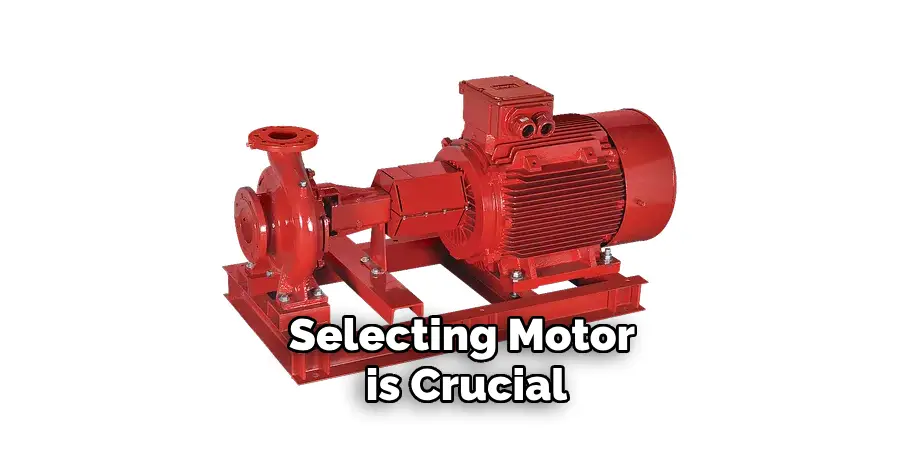
5) Ensure Proper Installation
Proper installation of a fire pump is critical for its effective operation and safety. The pump should be installed according to manufacturer instructions and national and local regulations, including proper clearances, piping size, and valve placement. Improper installation can lead to equipment failure or potential hazards in case of a fire emergency.
6) Perform Regular Testing
Regular testing of the fire pump is necessary to ensure its continued effectiveness. This includes flow and pressure testing, as well as full load tests to simulate a fire emergency. Any issues identified during testing should be addressed immediately to prevent potential failures in case of a real fire.
7) Have Backup Systems
In addition to backup pumps, it is essential to have backup power sources for the fire pump in case of a power outage. This can include diesel generators or battery-powered systems that can keep the fire pump operational during an emergency.
8) Train Personnel
Proper training on how to operate and maintain the fire pump should be provided to all relevant personnel, including building staff and firefighters. This ensures that the fire pump can be used effectively in case of a fire emergency and reduces the risk of accidents or injuries.
9) Conduct Regular Maintenance
Regular maintenance is crucial for ensuring the fire pump’s continued effectiveness and longevity. This includes inspecting and testing all components, such as motors, valves, and piping, to identify any potential issues and address them promptly. Proper maintenance can help prevent equipment failure and ensure the safety of building occupants and property.
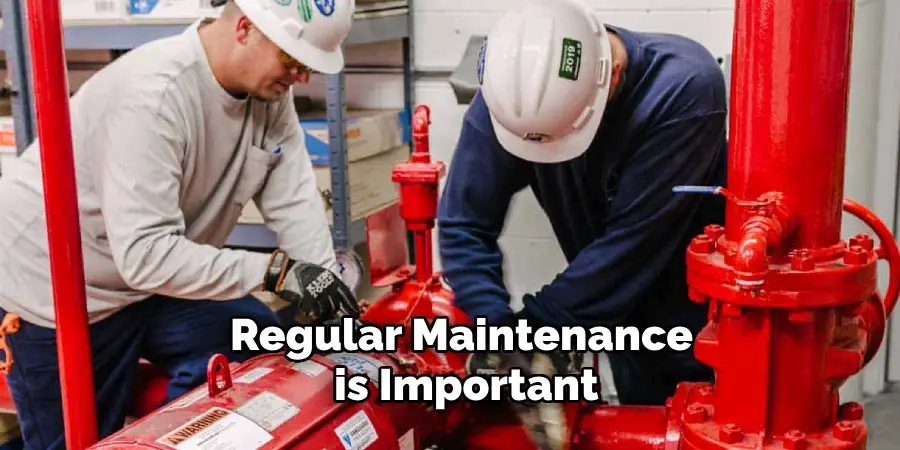
By following these nine safety measures on how to size a fire pump, you can ensure that your fire pump is not only properly sized but also installed and maintained for maximum efficiency and effectiveness in protecting against fires. Remember to always prioritize safety when designing, installing, and maintaining a fire pump for any building.
8 Things to Avoid When Sizing a Fire Pump
While there are many steps to follow when sizing a fire pump, it is also essential to know what to avoid. Here are eight things you should avoid when sizing a fire pump:
1) Underestimating Water Demand
One of the most critical factors in sizing a fire pump is accurately estimating the building’s water demand. Underestimating this demand can result in a fire pump that is too small to effectively combat fires, putting occupants and property at risk.
2) Overestimating System Pressure
While it may seem logical to select a fire pump with the highest possible pressure rating, overestimating system pressure can lead to unnecessary costs and potential safety hazards. The fire pump should be selected based on the building’s specific needs and not just its maximum pressure capabilities.
3) Not Considering Building Layout
The layout of a building can significantly impact the effectiveness of a fire pump. Factors such as distance from the water supply, elevation changes, and obstructions in the piping system should all be considered when sizing a fire pump.
4) Neglecting Piping Restrictions
Piping restrictions, such as elbows, fittings, and valves, can impact the flow rate and pressure of a fire pump. Neglecting to account for these restrictions in the sizing process can result in an undersized pump that cannot meet the building’s fire protection needs.
5) Ignoring Local Codes and Standards
As mentioned earlier, it is essential to adhere to all national and local codes and standards when sizing a fire pump. Ignoring these regulations can result in fines and potential safety hazards for building occupants.
6) Not Accounting for Future Growth
Failure to consider future growth in the building’s fire protection needs can lead to an undersized fire pump that may need to be replaced or upgraded in the near future. This can result in additional costs and disruptions to building operations.
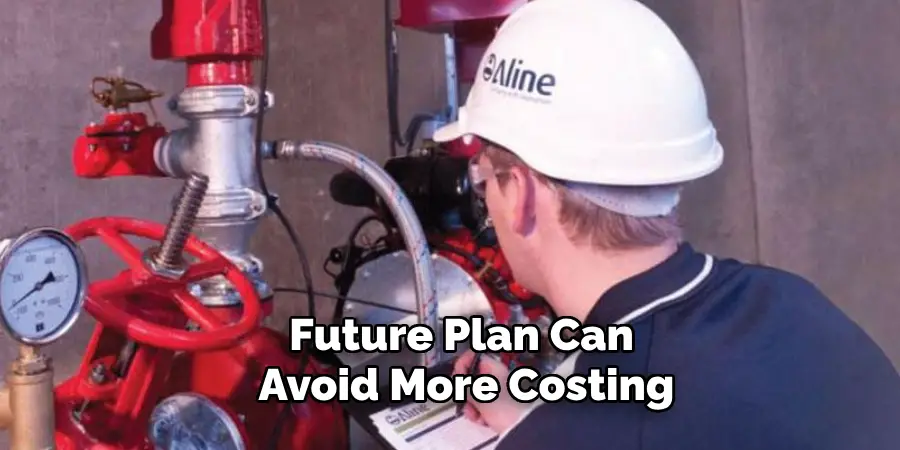
7) Selecting the Wrong Type of Pump
Different types of fire pumps are designed for specific applications, such as high-rise buildings or industrial facilities. Choosing the wrong type of pump for a building’s needs can lead to an ineffective system that cannot adequately protect against fires.
8) Skipping Regular Maintenance
Regular maintenance is crucial for the fire pump’s continued effectiveness and longevity. Skipping or neglecting maintenance can result in equipment failure, potentially leaving a building without proper fire protection during an emergency.
By avoiding these common mistakes when sizing a fire pump, you can ensure that your building has a reliable and efficient system in place to protect against fires. Remember to consult with professionals and adhere to all regulations and standards to ensure the safety of building occupants and property.
8 Additional Tips for Fire Pump Sizing and Maintenance
Here are eight additional tips to consider when sizing and maintaining a fire pump:
1) Consult with Professionals
It is crucial to seek the advice of professionals, such as fire protection engineers or licensed contractors when designing and installing a fire pump. They can provide valuable insights and ensure that all regulations and standards are met.
2) Consider Water Supply Options
In some cases, a building’s water supply may not be sufficient for the fire pump to operate effectively. In these situations, alternative water supply options, such as underground tanks or suction tanks, may need to be considered.
3) Use Approved Components and Materials
All components and materials used in the installation of a fire pump should be approved and listed for fire protection purposes. Using non-approved components can compromise the system’s effectiveness and potentially put occupants at risk.
4) Test Regularly
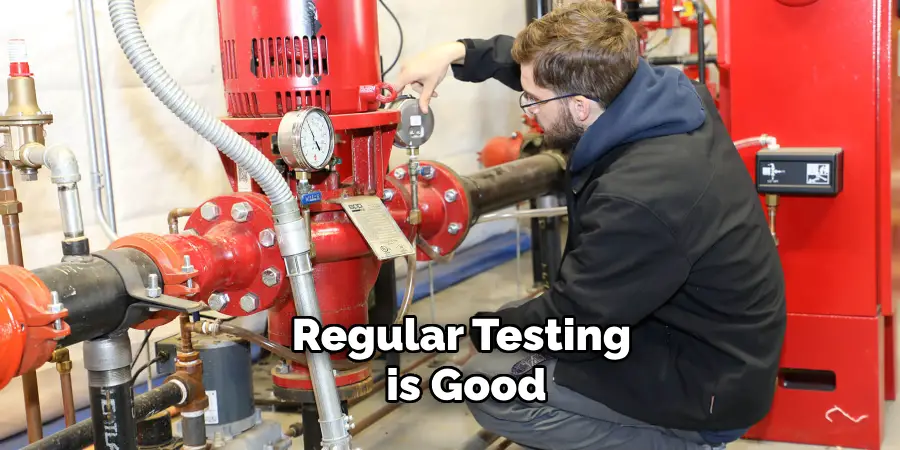
c should be conducted on all aspects of the fire pump, including pumps, motors, and control panels. This ensures that the system is functioning properly and can identify any issues that need to be addressed.
5) Train Personnel
All building personnel should receive training on the operation and maintenance of the fire pump. This can help ensure that they are familiar with the system and know how to respond in case of a fire emergency.
6) Keep Records
Maintaining detailed records of all inspections, test results, and maintenance performed on the fire pump is crucial for identifying any patterns or issues that may arise. This information can also be used to demonstrate compliance with regulations and standards.
7) Consider Redundancy
In some cases, a single fire pump may not be enough to adequately protect a building. In these situations, redundant pumps or backup power sources should be considered to ensure continuous fire protection.
8) Stay Up-to-Date on Codes and Standards
Codes and standards for fire pumps are continually evolving, and it is essential to stay up-to-date with the latest revisions. This can help ensure that your building’s fire protection system remains compliant and effective.
By following these additional tips on how to size a fire pump, you can further improve the safety and reliability of your building’s fire pump system. Remember to always prioritize safety when designing, installing, and maintaining a fire pump for any building. Overall, proper sizing and maintenance of a fire pump are crucial for ensuring the safety of building occupants and protecting against potential property damage in case of a fire emergency. So always consult with professionals, adhere to regulations, and stay vigilant in conducting regular testing and maintenance on your fire pump system.
Frequently Asked Questions
Can a Fire Pump Be Used in Any Type of Building?
No, the type of building and its layout should be considered when sizing a fire pump. Buildings with unique characteristics or high-rise structures may require special considerations. It is best to consult with professionals when determining the appropriate type and size of fire pump for a specific building.
What Are Some Common Causes of Fire Pump Failures?
Some common causes of fire pump failures include inadequate maintenance, power supply issues, and component failures. Regular testing and maintenance can help identify potential issues before they become major problems.
How Often Should a Fire Pump Be Tested?
According to NFPA 25, fire pumps should be tested annually. However, it is also recommended that weekly and monthly tests be conducted on specific components of the fire pump system. Consult with professionals or refer to local codes for specific testing requirements in your area. Overall, regular testing will help ensure that the fire pump is functioning correctly and can provide adequate protection in case of a fire emergency. So, it is essential to adhere to testing schedules and conduct any necessary maintenance promptly.
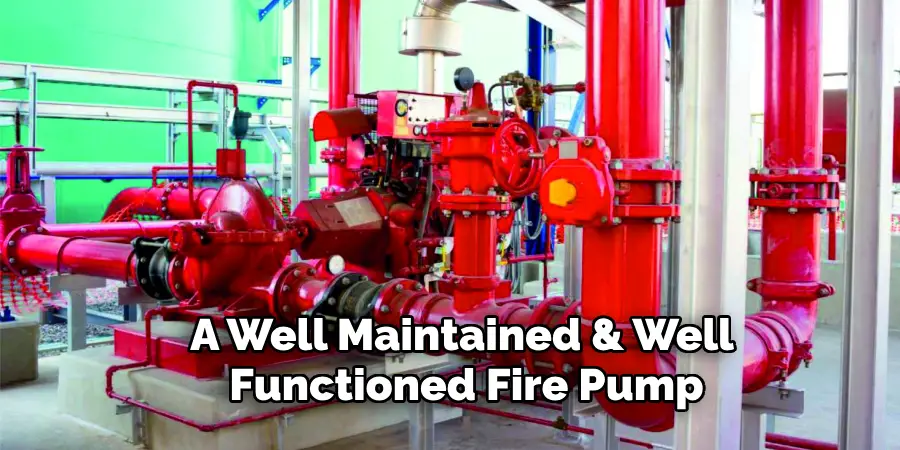
Conclusion
A properly sized and maintained fire pump is crucial for ensuring the safety of building occupants and protecting against potential property damage in the event of a fire emergency. By avoiding common mistakes on how to size a fire pump, consulting with professionals, adhering to regulations, and conducting regular testing and maintenance, you can have a reliable and effective fire pump system in place. Remember to stay up-to-date on codes and standards, consider alternative water supply options, and invest in redundancy if needed. With these measures in place, you can be confident that your building is adequately protected against fires.

